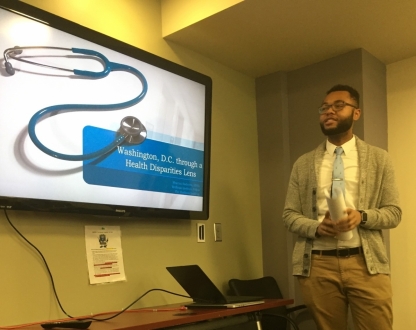Over winter break, I was offered an incredible academic opportunity to teach a course titled “Washington, D.C. through a Medical Lens” to over 100 GW Internal Medicine residents and interns. The primary objectives of the course were to understand the relationships between the social determinants of health and health outcomes, and to describe the underlying socio-economic patterns in Washington, D.C. As a 6th generation native Washingtonian, it was important to me that the course exposed health professionals to D.C. beyond Foggy Bottom and publicized more areas of the city.
To form a basic understanding of D.C., I began with a basic overview of the history of the city from its founding with the Residence Act of 1790, to the retrocession of D.C., to the gradual racial shift. For many years, D.C. has been known as the “Chocolate City.” Recent data, however, illustrates that D.C. is no longer a majority African American city. Additionally, D.C. has become one of the most segregated cities in the country. For example, in Eastern Georgetown, there are 41 white residents for every African American resident, and in Southern Washington Highlands in Ward 8, there are 384 African American residents for every white resident.
When I overlaid the racial segregation maps with maps of income, food environments, crime, high school graduation rates, and chronic disease, I identified a correlation between these concepts. Not surprisingly, poorer health conditions were clustered in areas with fewer health-promoting resources. Overall, the course was an excellent opportunity to expose health professionals to a more grassroots view of D.C., in the hopes of encouraging them to keep the information from this presentation in mind when they encounter patients from different backgrounds in their practices.


